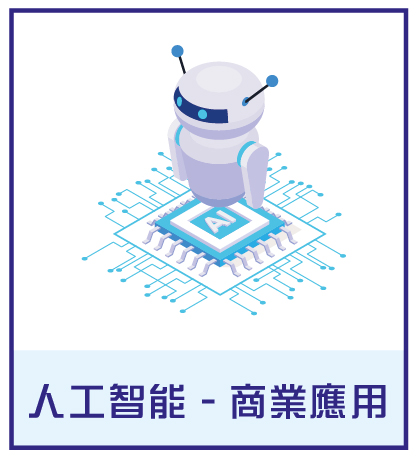應用學習課程介紹
應用學習是高中課程的選修科目之一,課程內容實踐與理論並重,與寬廣的專業和職業領域緊密連繫,配合核心科目、選修科目及其他學習經歷,構成靈活的科目組合,讓學生體驗全面的學習經歷。學生可以從課程中學習相關的基礎理論和概念,發展入門技能、與職業相關的能力及共通能力,探索自己的事業抱負和終身學習方向。
高中應用學習課程(2024-26年度)學生甄選安排(模式一)
Arrangement for Student Selection (Mode 1) for Senior Secondary Applied Learning Courses (2024-26 Cohort)
同學須填妥網上評估
Students are required to complete an online assessment
酒店服務營運 Hospitality Services in Practice (網上評估 Online Assessment)
市場營銷及網上推廣 Marketing and Online Promotion (網上評估 Online Assessment)
電子商務會計 Accounting for e-Business (網上評估 Online Assessment)
師生分享
In this ApL course, I have gained so much. Not only the knowledge of how to take care of different kinds of animals are taught but also strengthen my empathy and morality. I have been contacting different animals including those I have met in Ocean Park and KFBG, etc. Animals are ‘voice less’. We are not able to know their feelings through words. The only way is to observe and imagine their feelings from their perspective. And find ways to provide them with the bet living environment and minimize their suffering. This improved my ability to sense people’s or animal’s emotions and conditions; to empathize their situation.
During my year-long study of an Animal Care course, I have attended seminars, reviewed case studies and conducted research projects from animal welfare to anatomy, physiology, and behaviour. Most notably, I devised care plans for a rescued mongrel and an adopted Persian cat according to the “Five Needs” and Nurse Care Plan rubric, which ensures evidence-based, holistic quality care by animal carers. I have also learnt to use the “Gibbs’ Reflective Cycle” to reflect on my field trips and practical experiences, which helped develop my selfdirected learning skills. When I shadowed a vet nurse at a local animal hospital for two weeks, I witnessed the challenging yet meaningful work of a vet, and put into practice my knowledge from animal care lessons. For instance, I understood directional terminologies to take X-rays, prepared blood smears for haematology and serum biochemistry, and set up cages for hospitalisation. When checking vitals in a stenotic nares resection surgery of a 1-year-old neutered pug, I also identified heart murmurs taught in a clinical lessons about canine cardiac defects. Throughout this Animal Care course, my knowledge in veterinary science and animal welfare science was immensely deepened, and my dedication in studying veterinary medicine and becoming a veterinarian has without doubts grown.
在「電子商務會計」中,我了解到各行業的商業模式、明白到財務會計和成本會計的定義、亦學習了會計軟件的使用方式,為未來工作打好基礎。課程亦提供了不少活動及講座,例如會計師公會的生涯規劃、會計軟件Xero簡介與應用,引起了我對會計的興趣。在參加由會計師公會舉辦的Business Case Competition時,我明白到在現今社會運行一間公司的難度,以及開辦公司所要面對的困難,嘗試為公司想出解決方案並不是一件容易的事。所以我立志在將來成為會計師,為公司管理帳目,助高層作出有效的決策,令公司能長遠地運作下去。
酒店管理各國經濟體系中最具挑戰性與不為人所了解的專業。全球各地都有各式各樣類型的酒店,每間酒店的願景、信念及服務方式也有不同之處。一間成功的酒店,必須有優秀的前線員工。員工需要具備多元化的知識、良好的銷售技巧、友善的待客之道、快速的應變能力,甚至是創意。我認為工作的要訣是同理心。無論是提供服務的員工,還是享受服務的客人,只要換位思考,就能增進人與人之間的互動接觸,妥善處理人際關係,做到敬業樂業。這些特點結合起來,才能為客人帶來滿意的無形產品服務和獨一無二的酒店體驗。
在中學,大多課業都以個人形式完成,很少有機會可以與其他同學合作,以小組形式完成課業;而應用學習課程給予了我一個寶貴的機會去嘗試和實踐。在剛開始時,我十分緊張,害怕自己不能夠好好完成課業。幸好我遇到一班好組員,我們以自己的專長分工合作,例如我負責整合資料,另一位組員則設計封面和插畫等。不論是事前的準備工作或是口頭報告的表現,都需要團隊合作,每個人都是不可或缺的存在,這是我第一次體會到團隊合作的重要性。以前的我總認為只要提升自己的能力便無所不能,但其實與人合作更值得學習。個人的能力是有限的,與人合作才能互補不足,各展所長,使成品做得更好。








